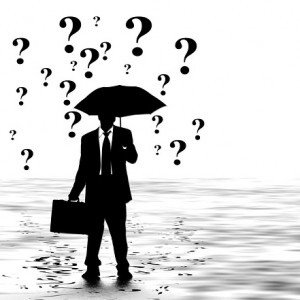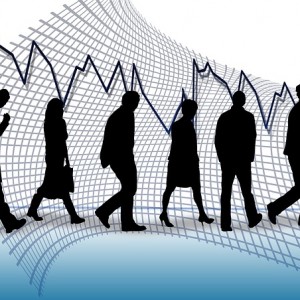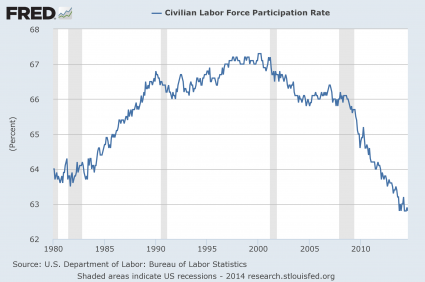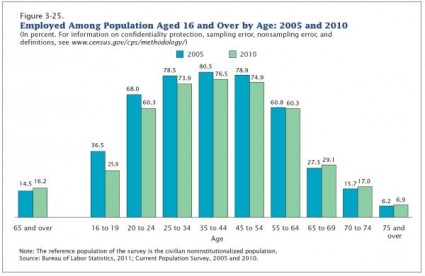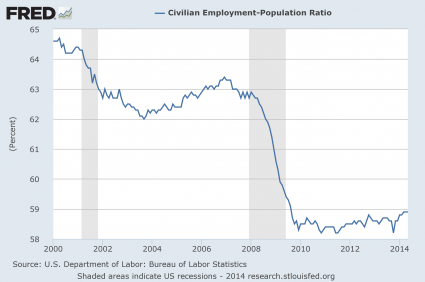 For the moment, our top public health officials are quite adamant that there absolutely will not be a major Ebola outbreak in the United States. But what if they are wrong? Or what would happen if terrorists released a form of weaponized Ebola or weaponized smallpox in one of our major cities? What would such an event do to our economy? I think that we can get some clues by looking at the economic collapses that are taking place in Liberia, Guinea and Sierra Leone right now. When an extremely deadly virus like Ebola starts spreading like wildfire, the fear that it creates can be even worse for a society than the disease. All of a sudden people don’t want to go to work, people don’t want to go to school and people definitely don’t want to go shopping. There are very few things that can shut down the economy of a nation faster. Considering the fact that our big banks are being more reckless than ever, we better hope that we don’t see a “black swan event” such as a major Ebola outbreak come along and upset the apple cart. Because if that does happen, our Ponzi scheme of an economy could implode really quick.
For the moment, our top public health officials are quite adamant that there absolutely will not be a major Ebola outbreak in the United States. But what if they are wrong? Or what would happen if terrorists released a form of weaponized Ebola or weaponized smallpox in one of our major cities? What would such an event do to our economy? I think that we can get some clues by looking at the economic collapses that are taking place in Liberia, Guinea and Sierra Leone right now. When an extremely deadly virus like Ebola starts spreading like wildfire, the fear that it creates can be even worse for a society than the disease. All of a sudden people don’t want to go to work, people don’t want to go to school and people definitely don’t want to go shopping. There are very few things that can shut down the economy of a nation faster. Considering the fact that our big banks are being more reckless than ever, we better hope that we don’t see a “black swan event” such as a major Ebola outbreak come along and upset the apple cart. Because if that does happen, our Ponzi scheme of an economy could implode really quick.
Right now there is just one confirmed case of Ebola in Texas. If they isolated him before he infected anyone else, we might be okay for the moment. But already we are being told that there may be “a possible second Ebola patient” in Dallas…
Health officials are closely monitoring a possible second Ebola patient who had close contact with the first person to be diagnosed in the U.S., the director of Dallas County’s health department said Wednesday.
All who have been in close contact with the man officially diagnosed are being monitored as a precaution, Zachary Thompson, director of Dallas County Health and Human Services, said in a morning interview with WFAA-TV, Dallas-Fort Worth.
“Let me be real frank to the Dallas County residents: The fact that we have one confirmed case, there may be another case that is a close associate with this particular patient,” he said. “So this is real. There should be a concern, but it’s contained to the specific family members and close friends at this moment.”
We have learned the name of the man that is confirmed to have Ebola. His name is Thomas Eric Duncan and when he went to Texas Health Presbyterian Hospital last Friday, he told them that he was feeling quite ill and that he was from Liberia. You would have thought that should have set off major alarm bells. But instead, he got sent back home…
The first Ebola patient diagnosed in the U.S. initially went to a Dallas emergency room last week but was sent home, despite telling a nurse that he had been in disease-ravaged West Africa, the hospital acknowledged Wednesday.
The decision by Texas Health Presbyterian Hospital to release him could have put many others at risk of exposure to the disease before he went back to the ER two days later, after his condition worsened.
Thomas Eric Duncan explained to a nurse Friday that he was visiting the U.S. from Liberia, but that information was not widely shared, said Dr. Mark Lester, who works for the hospital’s parent company.
So a fully contagious Duncan had the opportunity to spread the virus around for another 48 hours before he was finally admitted to the hospital for treatment.
And it wasn’t just adults that he potentially exposed to the disease. It is being reported that he had “close contact” with five students that attend four different Dallas schools. Local media is reporting that the names of those schools are Tasby Middle School, Hotchkiss Elementary School, Dan D. Rogers Elementary and Conrad High School.
Predictably, many parents are already pulling their kids out of school in the Dallas area.
It shall be very interesting to see how many kids actually show up for school tomorrow morning.
But this is what happens to a society when the fear of Ebola takes hold. People almost immediately start shutting down their activities and staying home.
Over in West Africa, months of Ebola fear is starting to take a major toll on the economy. For example, the president of Guinea says that his economy is on the verge of complete collapse…
Guinea has been more successful in containing the Ebola epidemic than its immediate neighbors in West Africa, but the loss of revenue caused by the crisis has left the country in dire financial straits, President Alpha Condé said after concluding a round of meetings at the United Nations General Assembly.
Mr. Condé said Guinea would need about $100 million until December to cover its budget gap, which will grow if Ebola is not tackled by the end of the year.
“The slowing down of our economies due to Ebola requires that most of our countries get some budgetary support … it’s going to be crucial that we get that support so our economies don’t completely collapse,” he said.
And things are even worse in Liberia. The Washington Post says that Liberia is descending “into economic hell”…
Liberia, the West African nation hardest it by Ebola, has begun a frightening descent into economic hell.
That’s the import of three recent reports from international organizations that seem to bear out the worst-case scenarios of months ago: that people would abandon the fields and factories, that food and fuel would become scarce and unaffordable, and that the government’s already meager capacity to help, along with the nation’s prospects for a better future, would be severely compromised.
If thousands of people start getting Ebola in major cities all over America, the same thing will happen here too.
A major Ebola pandemic in America would mean an almost total economic shutdown and basic essentials would start disappearing from the marketplace almost immediately. Just check out what is happening in Liberia even as you read this…
The basic necessities of survival in Liberia — food, transportation, work, money, help from the government — are rapidly being depleted, according to recent reports by the United Nations Food and Agricultural Organization, the International Monetary Fund and the World Bank.
Even though economic demand would drop through the floor for most things, prices for food and other essential supplies tend to skyrocket during a major emergency. The IMF says that the inflation rate will hit approximately 13 percent in Liberia by the end of the year even though economic activity has declined dramatically. It is going to become extremely challenging for most families over there to feed themselves.
And as economic activity withers, tax revenues also dry up. Liberia, Guinea and Sierra Leone are all facing massive revenue shortfalls, and they are asking for international assistance.
But if the same thing happened in the United States, do you think the rest of the world would send us lots of money to help us pay our bills?
I don’t think so.
Needless to say, an Ebola outbreak is not good for financial markets either. News of the confirmed case of Ebola in Texas helped push down the Dow more than 238 points on Wednesday, and airline stocks in particular declined sharply.
If there are no more confirmed cases of Ebola in Texas, things will probably get back to normal for U.S. markets.
But if Ebola does start spreading and cases start popping up all over the country, that could be just the thing to burst our massive stock market bubble.
Let us hope that this is just a false alarm.
Let us hope that our public health authorities have everything under control.
Nobody should want to see thousands (or potentially millions) of fellow Americans get sick and die.
Unfortunately, scientists tell us that it is only a matter of time before another major pandemic of some sort ravages this nation.
When that happens, will our fragile economy be able to handle the shock?
